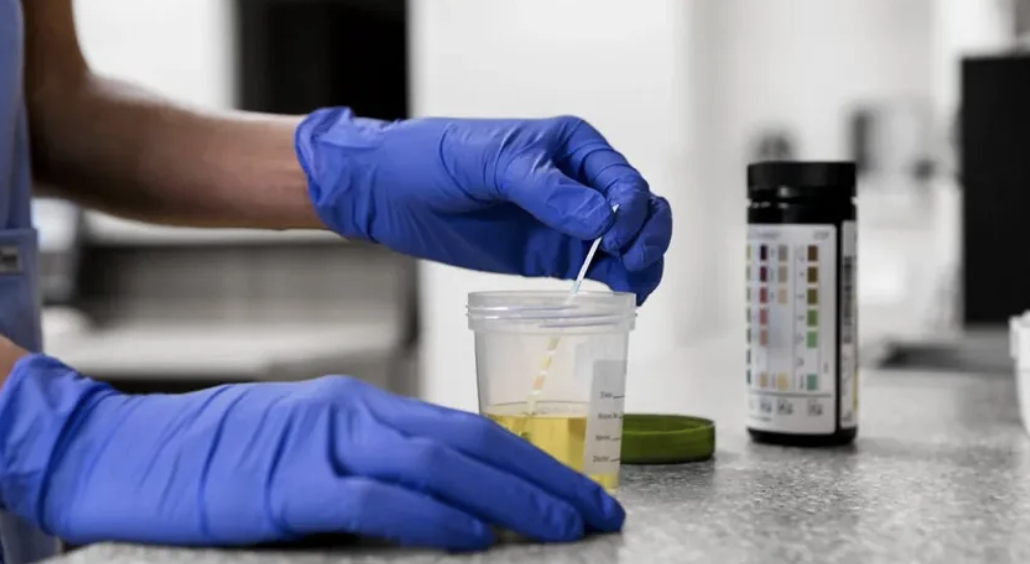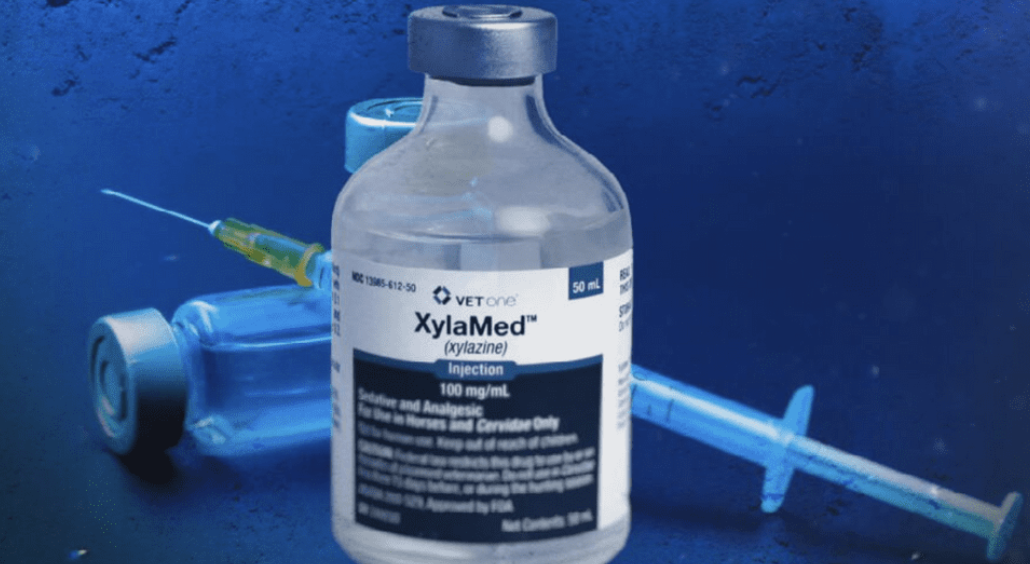Adderall addiction refers to the compulsive misuse of the prescription stimulant Adderall, primarily prescribed for attention deficit hyperactivity disorder (ADHD) and narcolepsy. When abused beyond prescribed limits, it becomes a substance that can lead to dependency and harmful consequences.
The physical symptoms of addiction include decreased appetite, accelerated heart rate, difficulty sleeping, restlessness, and nausea. Psychologically, individuals may experience diminished motivation, heightened anxiety, mood fluctuations, and severe mental health disturbances, including psychosis.
Additional signs of Adderall addiction may involve dry mouth, uncontrollable cravings, stomach discomfort, headaches, tremors, doctor shopping, and withdrawal-related issues.
Adderall withdrawal presents through symptoms like extreme fatigue, increased hunger, disrupted sleep, depression, irritability, anxiety, and challenges with focus and concentration.
Treatment options for Adderall addiction typically involve detoxification, medication-assisted recovery, contingency management (CM), 12-Step programs, cognitive behavioral therapy (CBT), and long-term aftercare to maintain recovery progress.
Is Adderall addictive?
Yes, Adderall is addictive. Its stimulant ingredients, amphetamine and dextroamphetamine, impact brain neurotransmitters, increasing focus and attention. Misusing Adderall, whether for non-medical purposes or exceeding prescribed doses, can lead to euphoria and, like other substances involved in opioid addiction, foster dependency.
Addiction risk escalates as repeated overuse leads to tolerance, dependence, and withdrawal symptoms. To reduce addiction risk and health complications, it is essential to follow a healthcare professional’s prescription.

How addictive is Adderall?
Adderall is highly addictive. Like cocaine addiction, it stimulates the central nervous system in a way that increases the potential for misuse. A 2020 study by Kerna et al. published in EC Psychology and Psychiatry highlighted the high potential for abuse despite its medical uses. Adderall is frequently abused by students as a “smart pill” for academic performance. Prolonged use often leads to both physical and psychological dependence.
Why do people misuse Adderall?
Adderall is commonly abused to enhance cognitive performance, focus, and alertness. Many individuals confuse it with a productivity booster or cognitive enhancer, especially professionals and students under pressure. The drug’s ability to increase energy and motivation is appealing for those facing long hours.
Additionally, some misuse Adderall for its euphoric effects, typical of stimulant drugs. Athletes are also at higher risk for misuse, drawn to its performance-enhancing qualities. A 2022 review by Berezanskaya et al., published in Sports Medicine – Open, found that amphetamine, a key component of Adderall, improves physical performance, specifically increasing strength, acceleration, and endurance.
According to an article titled “The Adderall Epidemic: Linking Illicit Adderall Use to Societal and Academic Pressures,” published in Ricci & Genussa and available on Consensus, the misuse of Adderall is closely tied to rising academic and social expectations. The study emphasizes that students and young professionals are especially vulnerable to using the drug non-medically in pursuit of achievement and status, contributing to a growing public health concern.
Can people with ADHD get addicted to Adderall?
Yes, individuals diagnosed with Attention Deficit Hyperactivity Disorder (ADHD) can develop an addiction to Adderall, particularly when the medication is misused or taken in higher doses than prescribed.
Adderall, a central nervous system stimulant containing amphetamine salts, is commonly prescribed to manage ADHD symptoms. When used as directed, it can be effective in improving focus and reducing impulsivity. However, its potential for abuse and dependence exists, especially when deviating from prescribed guidelines.
A case study titled “A Hyperactive Heart: A Case of Adderall-Induced Cardiomyopathy,” published in Rose & Klein, highlights the risks associated with Adderall misuse. The study discusses a patient who developed cardiomyopathy after escalating their Adderall dosage without medical supervision, underscoring the dangers of self-medication and the potential for addiction.
It's important to note that while individuals with ADHD are not inherently more susceptible to Adderall addiction, the risk increases with improper use. Adhering strictly to medical advice and dosage recommendations is crucial to minimize this risk.
For those concerned about Adderall use and potential addiction, it's advisable to consult healthcare professionals for guidance and support.
What is Adderall addiction?
Adderall addiction involves the compulsive misuse of the prescription stimulant Adderall, which contains amphetamine and dextroamphetamine. These chemicals enhance focus and alertness by affecting neurotransmitters in the brain. Although prescribed to treat ADHD, Adderall can become addictive when used outside of medical guidelines, fitting the broader definition of addiction. Its stimulant effects drive dependence, and the condition is recognized as stimulant use disorder in the Diagnostic and Statistical Manual of Mental Disorders, Fifth Edition (DSM-5).
How widespread is Adderall addiction?
Adderall addiction is prevalent. A 2014 study by David B. Clemow and Daniel J. Walker, published in Postgraduate Medicine, found that between 5% and 10% of high school students and 5% to 35% of college students misuse ADHD medications. Additionally, the 2021 National Survey on Drug Use and Health, published in December 2022 by the Substance Abuse and Mental Health Services Administration, revealed that 9.2 million people, or 3.3% of individuals aged 12 and older, abused central nervous system (CNS) stimulants in the past year. Of these, 27.7% (2.5 million people) misused prescription stimulants like Adderall.
What are the symptoms of Adderall addiction?
Adderall addiction manifests through a combination of physical and psychological symptoms, indicating the harmful and compulsive misuse of the prescription stimulant. These symptoms include:
Physical Symptoms:
- Lack of appetite: As a stimulant, Adderall suppresses appetite, leading to a significant reduction in food intake. Over time, this results in weight loss and potential nutritional deficiencies.
- Increased heart rate: A study by Tangu Sichilima and Michael J. Rieder (2009) published in Paediatrics Child Health found that elevated heart rate and blood pressure are common adverse effects of Adderall. While these effects are usually not clinically significant, persistent elevation can increase the risk of cardiovascular problems later in life.
- Insomnia: Adderall increases dopamine and norepinephrine levels in the brain, promoting wakefulness. This disruption of the sleep-wake cycle leads to difficulties falling asleep and staying asleep.
- Restlessness: Due to heightened dopamine and norepinephrine activity, Adderall creates a state of heightened energy and agitation, making individuals feel fidgety and unable to relax or stay still.
- Nausea and vomiting: Adderall's stimulant properties affect gastrointestinal function, causing nausea and, in some cases, vomiting due to disturbances in the digestive process.

Psychological Symptoms:
- Lack of motivation: Adderall users may experience a decline in motivation as they grow more dependent on the drug to boost focus and productivity. This lack of drive can negatively affect various areas of life, including work, academics, and relationships.
- Nervousness: The stimulant effects of Adderall can cause individuals to feel excessively jittery, on edge, or restless. This heightened state of nervousness makes relaxation and concentration challenging.
- Mood swings: Adderall addiction often results in extreme mood fluctuations, with individuals experiencing periods of euphoria followed by irritability, frustration, or depression as the drug's effects wear off.
- Anxiety: Ongoing misuse of Adderall leads to heightened anxiety, characterized by persistent worry and fear. According to the drug label for Adderall XR (2023), anxiety is a common side effect, leading some individuals to discontinue treatment.
- Psychosis: In rare cases, especially with higher-than-recommended doses, Adderall can trigger psychotic symptoms. A case report by Desai et al. (2022) published in Cureus detailed a 29-year-old patient who developed psychosis after exceeding the prescribed dosage. While acute amphetamine intoxication can induce temporary psychosis, some cases can evolve into a chronic condition.
What are the signs of Adderall addiction?
Adderall addiction can manifest through behavioral, physical, and mental signs that indicate harmful and compulsive misuse of the drug. These signs include:
Physical Signs:
- Dry mouth: A common physical sign of Adderall addiction is persistent dry mouth, caused by the drug’s stimulant effects on the salivary glands. This discomfort can make swallowing difficult and increases the risk of dental problems. A study that led to the approval of Adderall XR by the FDA found that around 35% of participants experienced dry mouth (Highlights of Prescribing Information, FDA, February 2022).
- Intense cravings: Persistent and strong cravings for Adderall are common among those addicted to the drug. These cravings drive repeated misuse, often despite negative consequences, reinforcing the addiction cycle.
- Abdominal pain: Adderall abuse disrupts gastrointestinal function, leading to discomfort, bloating, and abdominal pain as the digestive system is impacted by the stimulant.
- Headache: The stimulant effects of Adderall cause blood vessels to constrict and muscles to tense, leading to headaches. A lack of appetite, another side effect of Adderall, can also trigger migraines due to hunger.
- Tremors: Rhythmic shaking and involuntary muscle contractions, or tremors, occur due to Adderall’s effect on motor control. These tremors often become more noticeable with higher doses or prolonged use, highlighting the dose-dependent nature of this side effect.
Behavioral Signs:
- Doctor shopping: Individuals addicted to Adderall may engage in “doctor shopping,” seeking multiple healthcare providers to obtain additional prescriptions. This behavior signals a pattern of overuse and a desire to maintain an excessive supply of the medication.
Mental Signs:
- Withdrawal symptoms: Prolonged misuse of Adderall leads to dependence, as the brain adapts to the drug’s presence. When use is reduced or stopped abruptly, withdrawal symptoms occur, stemming from the brain's struggle to restore normal neurotransmitter balance. These symptoms reflect the neuroadaptive changes caused by addiction.

What causes Adderall addiction?
The development of Adderall addiction arises from a combination of biological, psychological, and environmental factors. These causes include:
Biological causes:
- Genetics: Certain individuals have a genetic predisposition to addiction due to variations in genes that regulate neurotransmitter levels, such as dopamine and its transporters. A study titled "Genetic Factors Modulating the Response to Stimulant Drugs in Humans" (2012, Current Topics in Behavioral Neurosciences) suggests that genetic variation plays a significant role in how individuals respond to stimulants, including their heightened attention, energy, and euphoria. Twin studies have further confirmed the heritability of acute responses to stimulant medications, emphasizing a strong genetic component.
- Changes in brain chemistry: Adderall alters brain chemistry by increasing the levels of neurotransmitters like dopamine and norepinephrine. This leads to heightened concentration and a sense of well-being, making individuals more prone to dependence, particularly those with ADHD who use the medication long-term to manage symptoms.
Psychological causes:
- Psychological influences: The desire to enhance academic performance, productivity, or weight loss drives individuals to misuse Adderall. The appeal of the drug’s ability to improve cognitive function in stressful or competitive environments can lead to dependency. Many individuals become reliant on these perceived benefits, which fosters addiction over time. According to an article titled “The Prospective Association Between the Use of Prescription Stimulants and Risk of Substance Use Disorder”, published by Conti et al. and available via Consensus, the non-medical use of prescription stimulants like Adderall is strongly associated with later development of substance use disorders. This association highlights how psychological motives, such as using stimulants to cope with pressure or perform better, can evolve into full-blown addiction over time.
Environmental causes:
- Environmental pressures: External factors, such as peer pressure, academic demands, and the accessibility of Adderall, significantly contribute to addiction. Social pressures and expectations, particularly in high-stress environments like schools or workplaces, encourage the use of Adderall as a performance enhancer or coping mechanism.
Misuse patterns:
- Misuse patterns: Individuals often develop addictive behaviors through misuse, such as exceeding prescribed doses, engaging in doctor shopping, or obtaining Adderall without a medical need. A lack of understanding of the risks involved, combined with these patterns of misuse, creates a cycle of dependency and addiction.
What effects does Adderall addiction have?
The consequences of Adderall addiction manifest across physical, psychological, and social domains, as the compulsive misuse of this prescription amphetamine leads to significant harm. The effects of Adderall addiction include:
Physical effects:
- Cardiovascular problems: Long-term Adderall use can elevate the risk of serious cardiovascular issues. A 2016 study by Sinha et al., published in Case Reports in Cardiology, found that adults with ADHD who used CNS stimulants, like Adderall, were at higher risk for severe events, including stroke, myocardial infarction, and sudden death. Factors contributing to this risk include increased heart rate, elevated blood pressure, and raised catecholamine levels that can cause vasospasm and other cardiac complications.
- Gastrointestinal issues: Adderall alters gut motility and sensitivity, leading to abdominal pain and discomfort. A 2016 case study by Panikkath and Panikkath published in Baylor University Medical Center Proceedings detailed a case in which a woman developed ischemic colitis and required a blood transfusion following amphetamine use. These gastrointestinal issues arise due to the changes in the digestive tract’s normal functioning.
- Seizures: Chronic and excessive Adderall use can disrupt neurotransmitter balance, leading to abnormal brain activity and seizures. This risk is particularly high in individuals using Adderall in high doses or those predisposed to seizure disorders. Seizures may present as uncontrolled convulsions or episodes of altered consciousness.
Psychological effects:
- Psychosis: Prolonged Adderall use is linked to an increased risk of psychosis. A 2019 study by Moran et al., published in The New England Journal of Medicine, reported that stimulant medications, including Adderall, have been associated with new-onset psychosis in adolescents and young adults with ADHD. The study found that 1 in 660 individuals experienced psychosis, with amphetamines being more likely to induce this condition compared to methylphenidate.
- Mood and perception distortion: According to an article titled “Expectancy for Adderall Influences Subjective Mood and Cognitive Performance”, published by Looby and Piccorelli and available via Consensus, individuals who expect positive cognitive and emotional effects from Adderall may experience altered mood and performance—even when given a placebo. This highlights the psychological impact of perceived drug effects and how such expectancy can contribute to ongoing misuse and dependency patterns.
Sexual dysfunction:
- Sexual dysfunction: Adderall’s stimulant effects can lead to anxiety and stress, which are known to contribute to erectile dysfunction. Additionally, Adderall’s vasoconstrictive properties reduce blood flow to the genital areas, making it difficult for individuals to achieve or maintain arousal. A study by Smith et al., published in Substance Use & Misuse (March 2017), highlighted that loss of sex drive was a common side effect, particularly among male users of non-prescribed stimulants.
Does Adderall addiction impact personality?
Yes, adderall addiction can significantly affect an individual's personality by altering brain chemistry, particularly neurotransmitters like dopamine and norepinephrine. These changes influence mood, behavior, and interpersonal dynamics in noticeable ways.
Increased energy and focus: In the early stages of use, individuals may appear more energized, focused, and sociable due to the stimulant's cognitive-enhancing effects. This initial boost can be perceived as increased productivity or heightened engagement in tasks and conversations.
Mood changes: Over time, as the addiction develops, individuals often become more irritable, anxious, and emotionally unstable. Mood swings become more frequent, and reactions to everyday stressors may become exaggerated or unpredictable.
Shift in priorities: Sustaining the addiction becomes a central focus, often at the expense of relationships, work, and personal responsibilities. This shift can cause individuals to withdraw socially, neglect obligations, and appear detached or preoccupied.
According to an article titled “Misuse of Prescription Stimulants and Their Effect on Personality Traits”, published by Friederichs et al. and available via Consensus, chronic stimulant misuse, especially non-medical use of Adderall, is associated with increased impulsivity, emotional dysregulation, and reduced conscientiousness. These personality changes may persist beyond active use, highlighting the long-term psychological toll of stimulant addiction.
What are the symptoms of an Adderall overdose?
An overdose of Adderall can lead to severe and potentially life-threatening symptoms due to excessive stimulant effects on the body and brain. The common symptoms of an Adderall overdose include:
- Restlessness: Overdosing on Adderall leads to an uncontrollable state of restlessness and agitation, where the individual experiences hyperactivity and an inability to relax.
- Confusion: Cognitive disturbances, including confusion, difficulty concentrating, and mental fog, occur as a result of the overstimulation of neurotransmitter systems.
- Aggression: Heightened aggression and irritability are common in overdose situations. The overstimulation of the central nervous system can lead to emotional volatility and aggressive behavior.
- Hallucinations: Hallucinations, including visual and tactile experiences (e.g., seeing snakes or insects), are a severe consequence of Adderall overdose. These perceptual disturbances indicate significant harm to the brain’s ability to process reality.
- Panic: Intense feelings of panic and anxiety may arise, contributing to a heightened sense of fear and emotional distress. In overdose cases, these feelings of panic can be overwhelming.
- Rapid breathing: Overdosing on Adderall can lead to an increased respiratory rate or fast breathing as the central nervous system becomes overstimulated.
- Nausea and vomiting: Gastrointestinal distress, such as nausea and vomitin,g is common, driven by the intense physiological effects of the overdose.
- Coma: In extreme cases, an overdose may result in a coma, where the individual becomes unconscious and unresponsive. This is a medical emergency requiring immediate intervention.
The combination of these symptoms reflects the dangerous effects of an Adderall overdose, necessitating urgent medical care to avoid serious complications.
How many Adderall can you take in a day?
The appropriate daily dosage of Adderall varies based on individual medical needs and should always be determined by a licensed healthcare provider. For individuals diagnosed with ADHD, the goal is to find the lowest effective dose that controls symptoms without producing harmful side effects or increasing the risk of dependence.
For most adults prescribed immediate-release Adderall (IR), treatment typically starts at 5 mg once or twice a day. Depending on response and tolerance, this can be gradually increased, but the total daily dose generally should not exceed 40 mg. For extended-release Adderall (XR), the usual starting dose is 10 mg once daily in the morning, with a common maximum dose of 30 mg per day.
To minimize the risk of addiction, it is essential to take Adderall strictly as prescribed. This means not increasing the dose without medical supervision, not using it on an “as-needed” basis for focus or energy, and not sharing or using someone else’s prescription. Misusing Adderall, whether by taking higher doses, using it recreationally, or combining it with other stimulants, increases the likelihood of dependence and long-term harm.
What are the symptoms of Adderall withdrawal?
The symptoms of Adderall withdrawal encompass both physical and psychological effects, including fatigue, increased appetite, disrupted sleep patterns, depression, irritability, mood swings, anxiety, and difficulty concentrating. These symptoms arise when an individual who is dependent on the drug reduces or ceases its use, causing the body to adjust to the absence of Adderall. Along with these symptoms, individuals often experience intense cravings for the drug, as their body seeks to regain the stimulant's effects. This range of withdrawal manifestations is a sign that the body is readjusting, and managing this process requires a careful tapering method under medical supervision to promote recovery and prevent potential complications.

How long does Adderall withdrawal last?
Adderall withdrawal typically lasts between one and three weeks. The initial phase, often referred to as the “crash,” lasts about a week and is characterized by increased sleep, hunger, and a decrease in depressive symptoms. After this, a subacute phase with persistent symptoms like sleep difficulties and increased appetite can last up to three weeks. Withdrawal symptoms may be prolonged for individuals who have used Adderall for a long period or at high dosages.
What treatment options are available for Adderall addiction?
The available treatments for Adderall addiction take a holistic approach, addressing behavioral, psychological, and physical aspects of the issue. These treatments are listed below:
- Detoxification: A critical initial step in treating Adderall addiction, detoxification involves a supervised and gradual withdrawal process to help manage symptoms and make the transition to abstinence easier and safer.
- Medications: While there are no FDA-approved medications specifically for Adderall addiction, medications may be prescribed to manage withdrawal symptoms or address co-occurring mental health conditions like anxiety or depression.
- Contingency Management (CM): A behavioral therapy approach that provides rewards or incentives to individuals for maintaining their abstinence from Adderall. CM is considered one of the most effective treatments for stimulant addiction.
- 12-Step Programs: Organizations like Narcotics Anonymous offer a structured and supportive environment for recovery, promoting introspection, responsibility, and ongoing support from peers who have faced similar challenges.
- Cognitive Behavioral Therapy (CBT): A therapy method that focuses on identifying and changing maladaptive behaviors and thought patterns related to substance abuse, helping individuals develop effective coping mechanisms and stress management skills.
- Continued Care: Ongoing support and treatment after the initial recovery phase, including aftercare programs, support groups, or outpatient therapy to help individuals maintain recovery, overcome challenges, and prevent relapse.

When should someone seek counseling for Adderall addiction?
Adderall addiction counseling is necessary when individuals exhibit signs of dependence, misuse, or compulsive behavior related to the drug. This includes difficulty controlling their use, experiencing strong cravings, neglecting responsibilities, and continuing to use Adderall despite negative consequences. Counseling is crucial when the drug use negatively impacts daily life, relationships, or overall health. Additionally, if stress, academic pressures, or co-occurring mental health issues make it difficult to address the underlying causes of addiction, professional counseling becomes essential.
The goal of Adderall addiction therapy is to offer personalized support, address the root causes of the addiction, and provide individuals with coping skills to ensure long-term recovery. When caught early, substance abuse problems are less likely to worsen and become more manageable through effective counseling and treatment.
Can Adderall help with alcohol addiction?
No, adderall is not a recommended or effective treatment for alcohol addiction. In fact, using Adderall in individuals with alcohol use disorder can increase health risks and complicate recovery.
Adderall is a stimulant medication primarily prescribed for attention deficit hyperactivity disorder (ADHD) and narcolepsy. It increases dopamine and norepinephrine levels in the brain, which enhances focus and alertness. However, this stimulant effect does not address the underlying neurochemical imbalances or behavioral components of alcohol addiction.
Using Adderall in someone struggling with alcohol use disorder can increase the risk of polysubstance abuse, making recovery more complex. First, combining stimulants like Adderall with alcohol may mask the sedative effects of drinking, causing individuals to underestimate how intoxicated they are, leading to a higher risk of alcohol poisoning and dangerous behaviors. Second, people with substance use disorders are more likely to misuse Adderall, especially if they perceive it as a way to cope with low energy or depressive symptoms during withdrawal.
Treatment for alcohol addiction should involve evidence-based approaches such as behavioral therapy, counseling, and FDA-approved medications like Naltrexone, Acamprosate, or Disulfiram. These interventions are designed to reduce cravings, support sobriety, and address the psychological and physical effects of alcohol dependence, unlike Adderall, which has no clinical benefit in this context and carries a high potential for misuse.
What is the difference between Adderall addiction and Ritalin addiction?
The difference between Adderall and Ritalin addiction lies in the distinct pharmacological properties of these prescription stimulants, which affect how they work in the body. Ritalin acts more quickly than Adderall and reaches its peak effect sooner. However, Adderall remains active in the body for a longer period of time than Ritalin. This difference in duration of action leads to varying side effects and responses among individuals.
The primary components of these drugs are also different. Adderall is a combination of four amphetamine salts (dextroamphetamine saccharate, amphetamine aspartate, dextroamphetamine sulfate, and amphetamine sulfate), whereas Ritalin's active ingredient is methylphenidate hydrochloride (MPH). Despite these differences, both drugs work by increasing neurotransmitter levels in the brain, particularly dopamine and norepinephrine, which is a key factor in their potential for addiction.
Both medications are used to treat ADHD and narcolepsy, but are classified as Schedule II controlled substances, meaning they carry a high risk for abuse and addiction. The risk of addiction increases when these medications are misused or taken outside of the recommended guidelines.
















